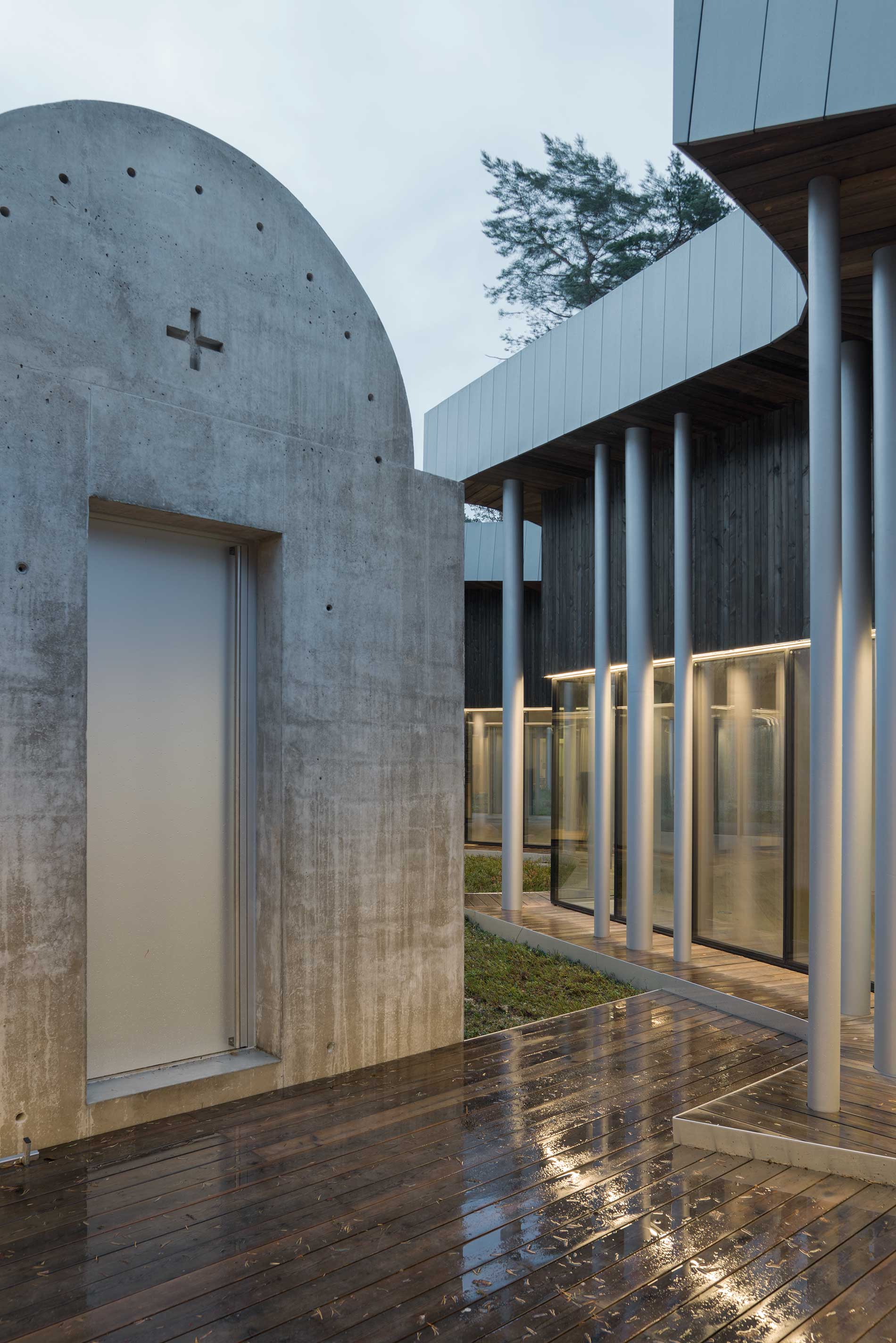The creative room with its view of the forest is intended as a study for the centre’s artists in residence. Not only are composers and musicians welcome, but also representatives of other fields – writers, artists, film and dance practitioners, and also small collectives. In the future, the centre plans to establish a resident artist stipend, which would allow a creative person to work at the centre for a longer period and would allow them to embark on larger pieces and projects.
One of the particularly special rooms at the centre is Arvo Pärt’s study aka the Berlin room, which is mostly furnished with personal objects from the composer’s Berlin home. In addition to a piano, small spinet, scores and books, there is also an old tobacco cupboard in which the composer kept his musical diaries (now they are kept in the centre’s archive), and a massive writing desk on which Arvo Pärt wrote many of the pieces created during his Berlin years.
The Berlin room is the composer’s private study and its doors are generally closed to visitors to the centre.







